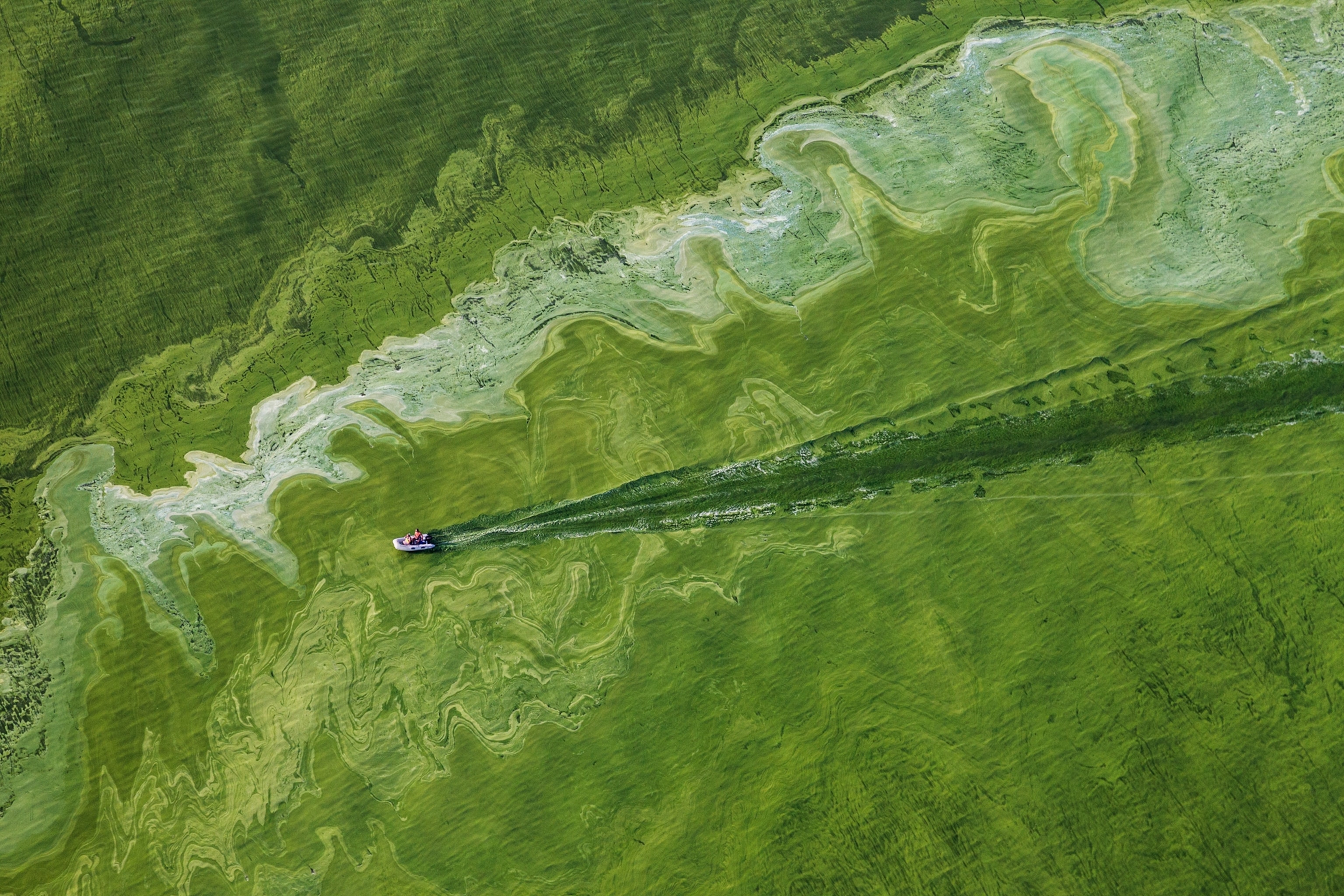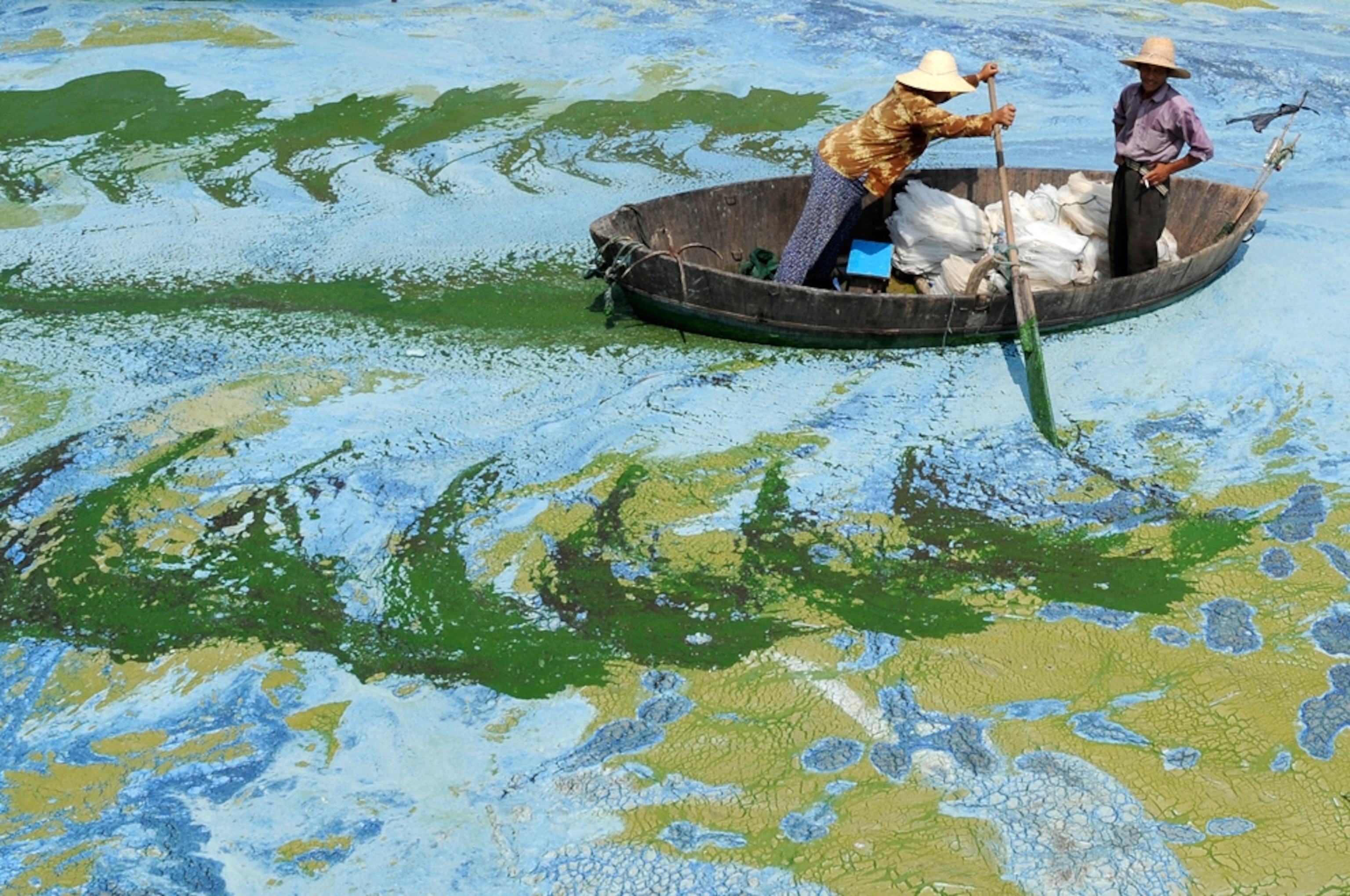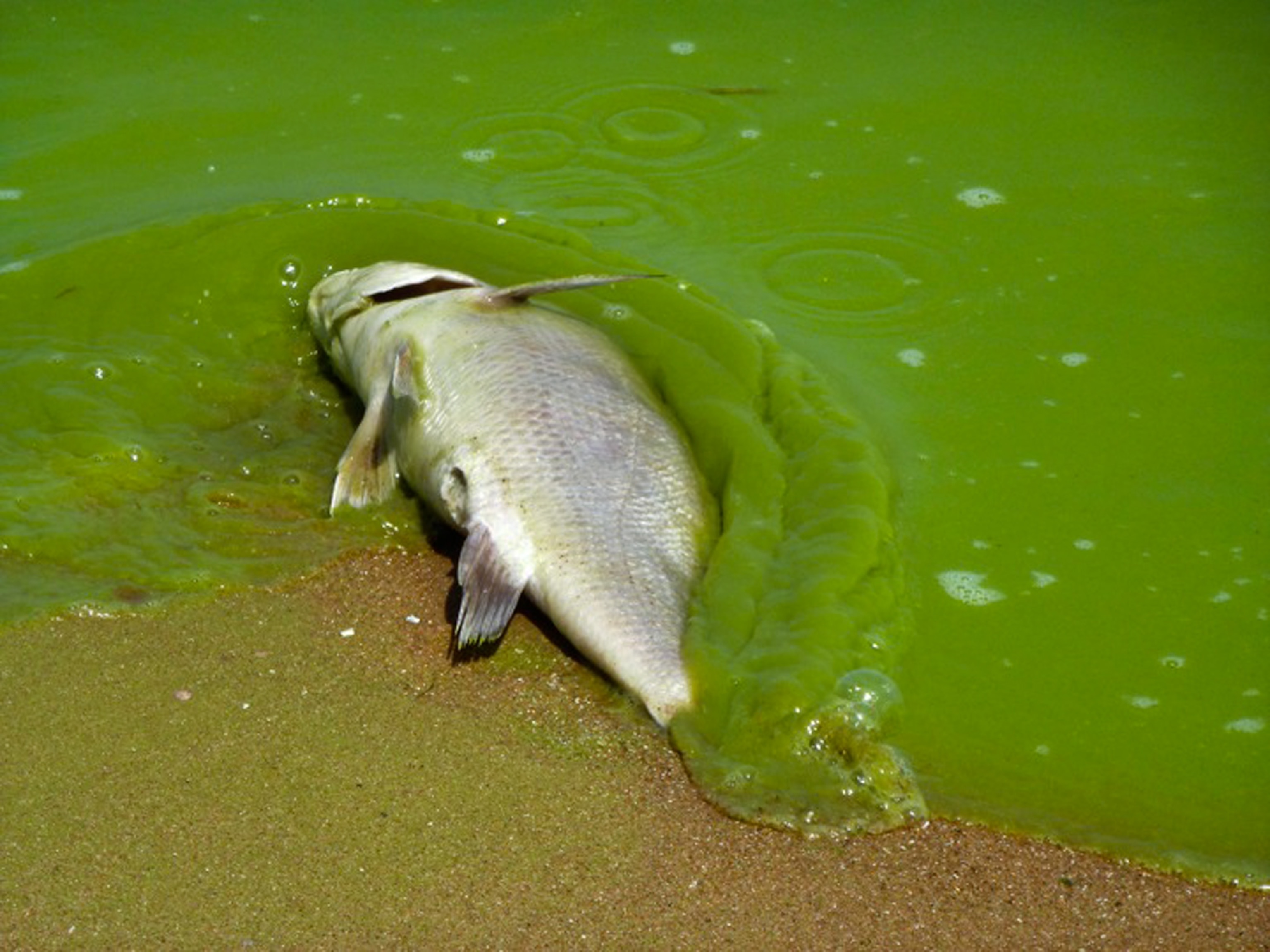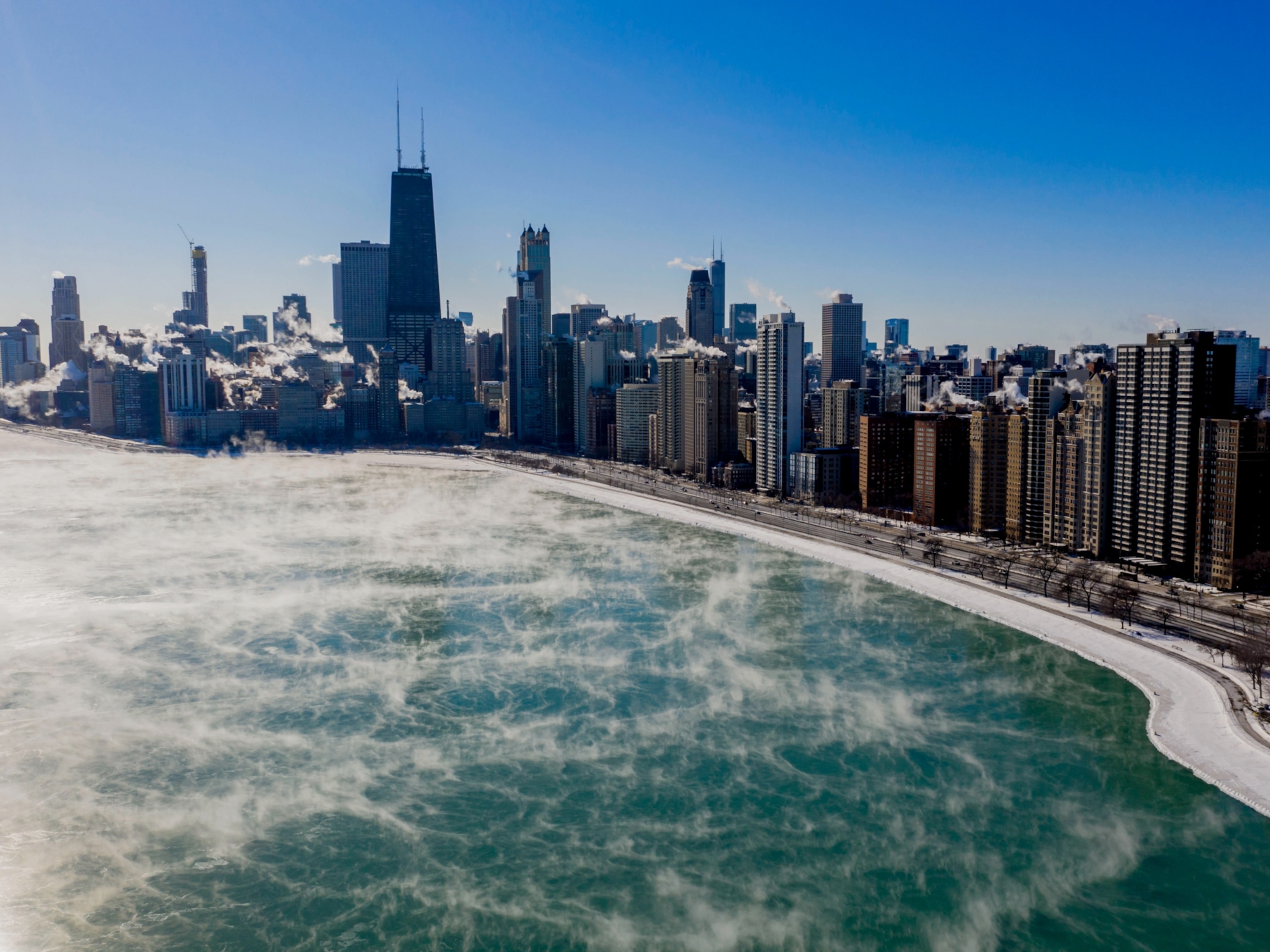Pictures: Extreme algae blooms expanding worldwide
Too much of a good thing? Excess nutrients, warmer temperatures, and an increasing population are causing explosions of algae worldwide.
With an estimated seven billion people and counting, the world's population will only get hungrier. The advent of fertilizers and high-yield crops have helped growers keep pace with the demand for food.
But there's an unintended crop flourishing around the world that is not always so beneficial. Microscopic, plantlike organisms called algae thrive on the excess nutrients—like nitrogen and phosphorus—found in fertilizers that make their way from backyards and fields, producing blooms that can sometimes be seen from space.
Combined with warming temperatures and water circulation patterns, coastal areas such as Qingdao, the Gulf of Mexico, and the U.S. West Coast—as well as freshwater systems like the Great Lakes—are no strangers to enormous algae blooms that can turn the water green or red.
Some of these blooms can create dead zones, or areas that are deprived of oxygen, in the water. And some algal species can also produce toxins that wreak havoc on human livers and neurological functions and cause seizures in marine mammals. (Read more: Toxic algae causing brain damage, memory loss in sea lions.)
"There's no question in my mind that we are seeing a global increase in the frequency and severity of these [blooms]," said David Caron, a researcher at the University of Southern California (USC) in Los Angeles who studies harmful algal blooms.













